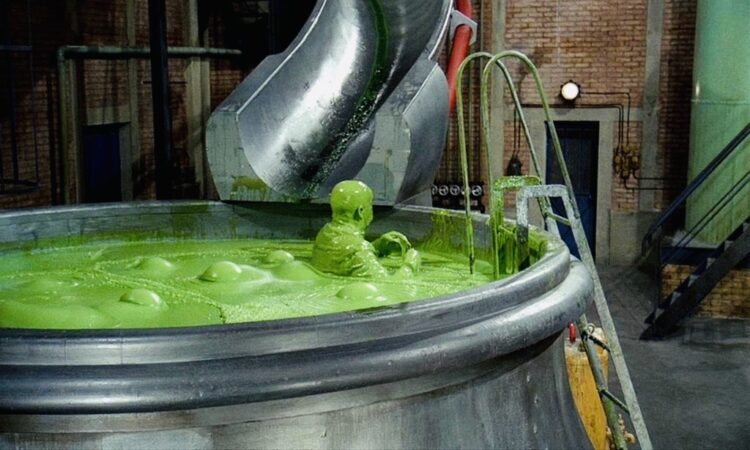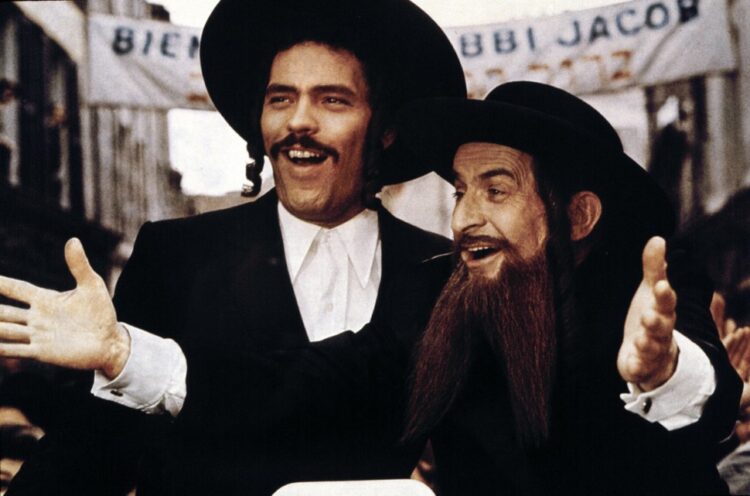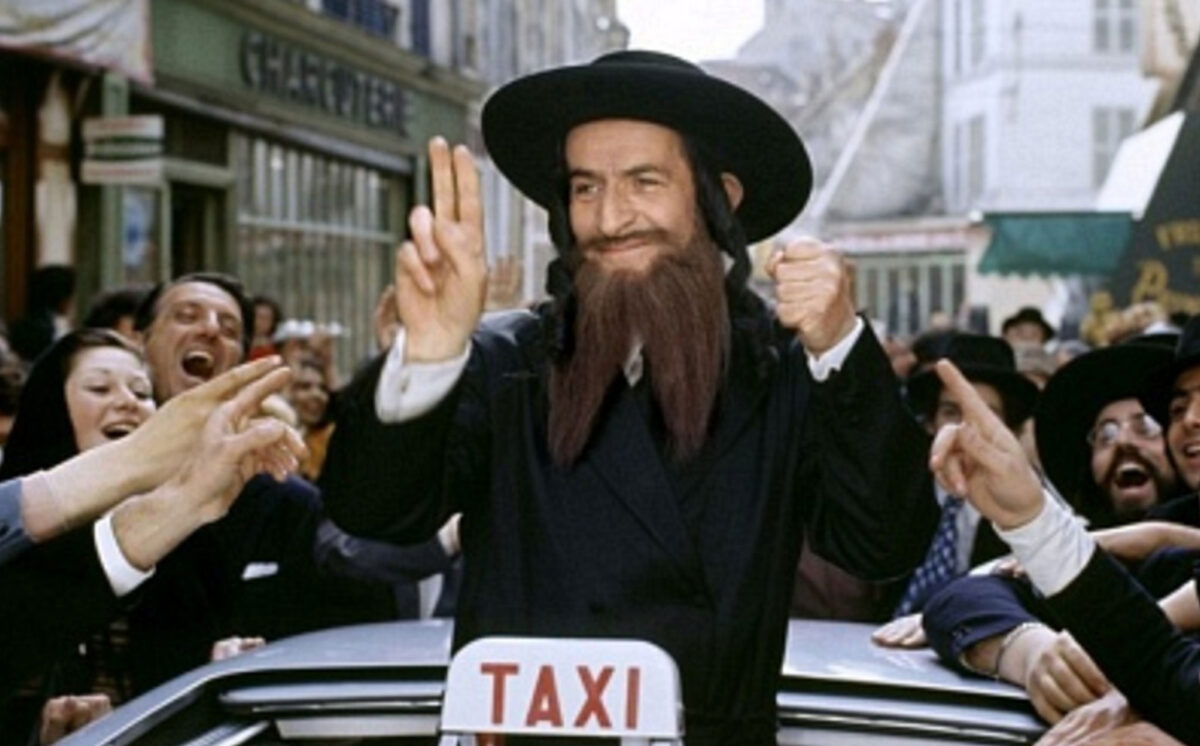Gerard Oury was clearly influenced by the likes of Charlie Chaplin, Buster Keaton and Laurel and Hardy when he directed The Mad Adventures of Rabbi Jacob, an uproarious and madcap French comedy now being screened online by the Toronto Jewish Film Foundation.
Although it was released in 1974, it has not been dulled by the passage of time. A bracing farce about mistaken identity and prejudice, its main characters are a revered chassidic rabbi, a bigoted French Catholic businessman, his Jewish chauffeur, and a bunch of assassins hot on the heels of an Arab revolutionary.
Set briefly in New York City, it unfolds primarily in Paris. Rabbi Jacob (Marcel Dalio) is returning to France after a long absence to attend his nephew’s bar mitzvah. With his caftan, shtreimel, sidelocks and beard, he cannot be anything but a member of an ultra-Orthodox sect.
Victor Pivert (Louis de Funès), the Catholic businessman, can barely tolerate anyone who’s not French. Yet when he learns that his driver, Solomon (Henry Guybet), is Jewish, he takes the news in stride and with a philosophical shrug.
Little do they know what awaits them around the next curve on the road. In short order, Solomon loses control of the car, and it careens into a lake. They survive the accident, but more challenges lie ahead.
Pivert finds shelter in a nearby chewing gum factory, and this is where the fun begins. Much to his surprise, Pivert finds himself sliding down a precipitous chute. He lands with a splash in a huge vat filled to the brim with a green sticky liquid. The substance adheres to his body and feet, producing giant exploding bubbles.

The hilarity of this priceless scene defines the jocular mood of the film. I laughed out loud watching Pivert desperately trying to regain his balance.
He’s not the only person slip sliding around in the factory. Assassins are attempting to hunt down and capture Slimane (Claude Giraud), a revolutionary-in-exile from an unidentified Arab country.
In a bid to save himself, Slimane takes Pivert hostage. They end up at the airport and, inspired by Rabbi Jacob’s appearance, disguise themselves as haredi Jews. Since Pivert looks remarkably like Rabbi Jacob, he’s greeted enthusiastically by the rabbi’s family. The police, in the meantime, mistake the rabbi for Pivert, who’s already running late for his daughter’s wedding.

Driven to the predominately Jewish Marais quarter, Pivert and Slimane receive a joyous welcome. Solomon recognizes Pivert, but keeps this information under his yarmulke.
Under a undulating sea of white prayer shawls, a riotous and rather unique scene takes place in the Star of Kiev synagogue. This is slapstick humor at its finest, the kind perfected in Hollywood during the silent movie era.
The performers are well cast, playing their respective roles with panache and excellent timing, and Oury’s direction is spot on. Forty eight years after its release, The Mad Adventures of Rabbi Jacob has earned its place as a classic of the cinema.
